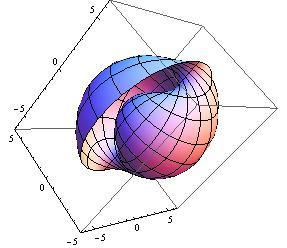There is a well known pattern that turns up in nature involving the golden ratio $\phi = \frac{\sqrt{5}-1}{2}$.
To get this "sunflower spiral" pattern, put the $k$th node at an angle of $2\pi \phi k$ and a radius of $\sqrt{k}$. The effect that this has is that each node is nicely spaced apart from its neighbours.
There are a couple of different ways to think about what this spiral is doing: it's something like a reasonably good packing algorithm in 2 dimensions that works for any number of points being packed. Another way to think about it, looking at the projection of the pattern onto the circle, is as a sequence of measures on the circle, where adding the $k$th puts a point weight at it's argument. This sequence of measures on the circle is near uniformly spaced at each step of the sequence.
The question is: Is there a similar spiral-like thing for 3 (or more) dimensions?
That is (for 3 dimensions), we want to put a sequence of nodes down in $\mathbb{R}^3$ so that the $k$th node is at radius $\sqrt[3]{k}$ from the origin, and so that the resulting pattern is reasonably well packed, in whichever sense analogous to those above you want. Is there a natural way to generate such a sequence on $S^2$ (perhaps by iterating a relatively simple function?), like there is for the sunflower spiral on $S^1$?


